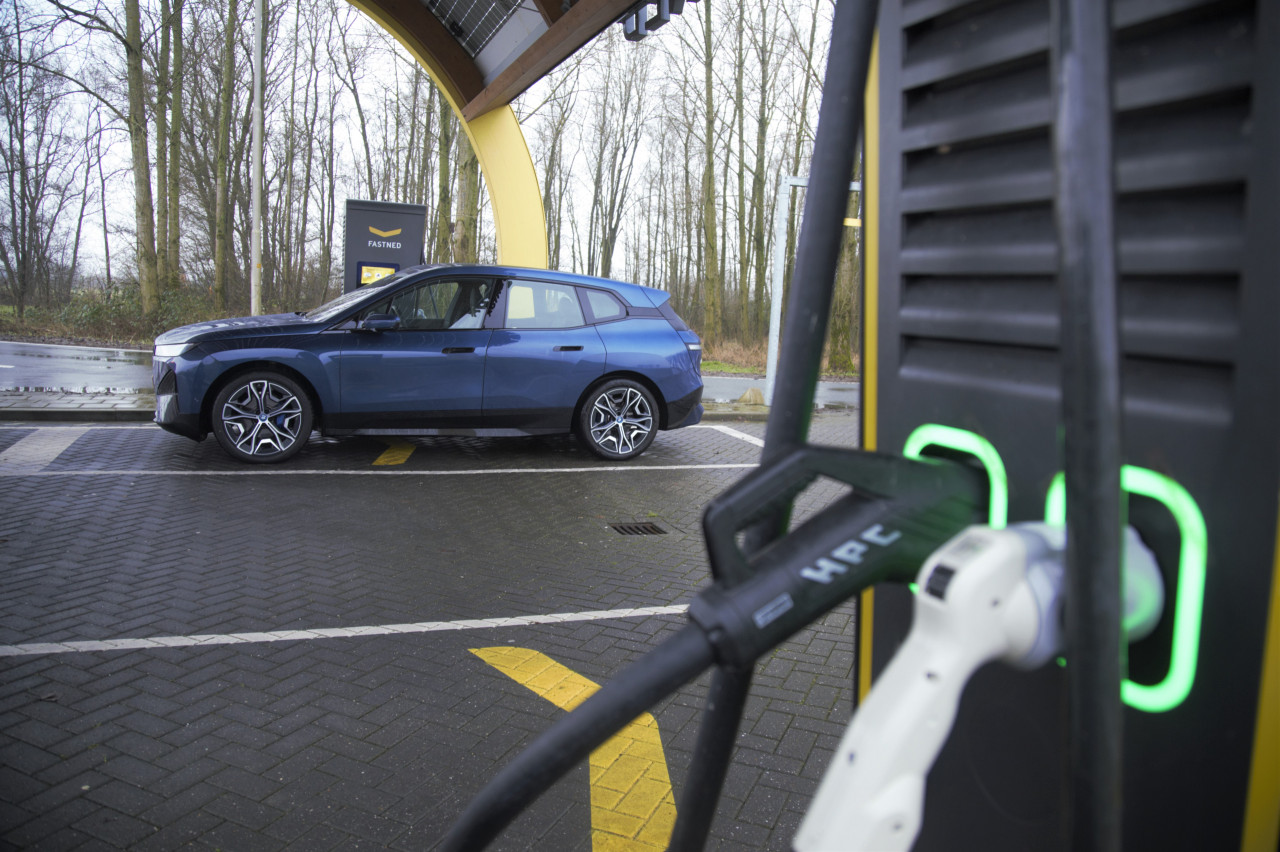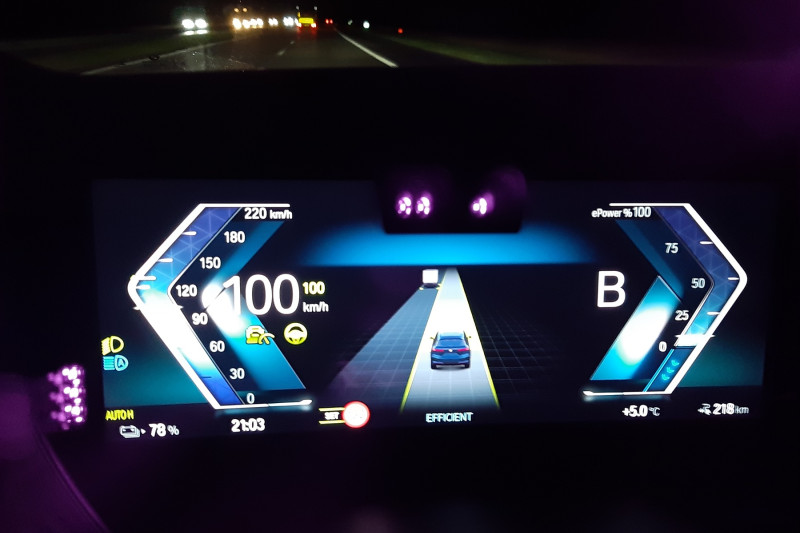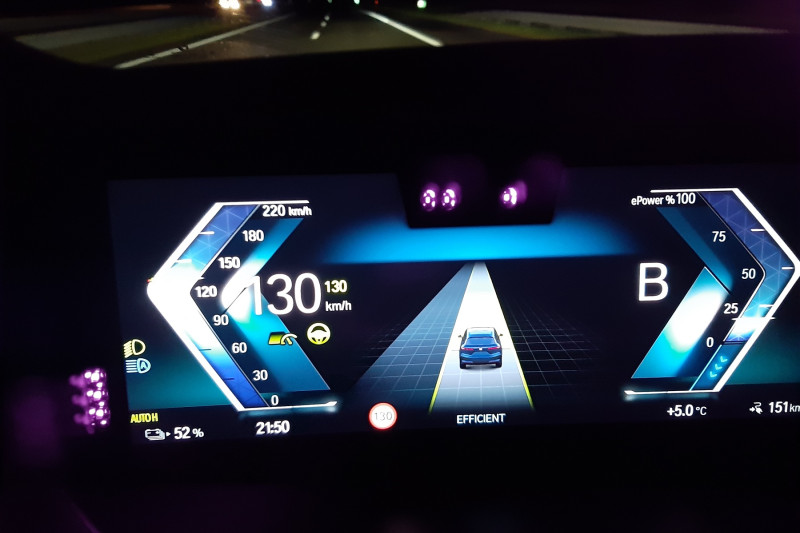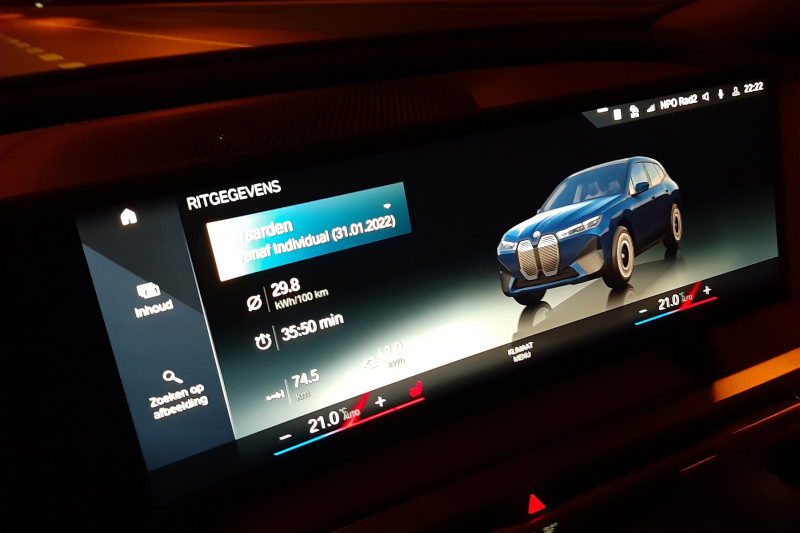How far does the electric BMW iX go on a single battery charge? We test its range at 100 km/h and 130 km/h. One stumbling block: the German SUV has to compete with storm Corrie. And that puts a heavy stamp on the performance of the battery …

BMW is catching up with electric vehicles. Finally there is a sequel to the already 9 years old, but still leading BMW i3. Based on the 4-series Gran Coupé, there is the BMW i4, which we also subjected to a range test.
The BMW iX is a large, luxury SUV, which has great similarities with the small i3 in terms of construction and philosophy. The car is designed in the wind tunnel; with a Cw value of only 0.25, the iX can be counted among the most streamlined cars of the moment. Exotic materials help to keep the weight of the car (relatively) low, sustainable production methods reduce the carbon footprint of the iX even further.
Corrie has the Netherlands (and the BMW iX) in her grip
The BMW iX comes in three power variants: the iX xDrive40 (326 hp, 76.6 kWh), the xDrive50 (523 hp, 111.5 kWh) and the M60 (619 hp, 111.5 kWh). We test the entry-level version. With the iX xDrive40, 71.0 kWh of the total battery capacity is available for the drive and related systems. BMW gives a WLTP consumption of 19.3 kWh/100 km for the iX xDrive40, with a very usable range of 425 kilometers – under optimal conditions.
For this test we drive our usual route: a 40 kilometer long highway route, there and back. Over a distance of about 80 kilometers we look at how much electricity the car consumes at 100 km/h and at 130 km/h. The conditions are far from favourable: it is only 4.5 degrees, there is now and then some rain and on the test day storm Corrie is making itself felt. But with such a smooth shape, the BMW iX should not care much about wind force 5 to 6.


BMW iX xDrive40: range at 100 km/h
With the adaptive cruise control at 100 km/h, the heated seats and the optional Laser Light that completely illuminates the dark highway in front of the car, we head south. With Corrie on our heels, the on-board computer barely exceeds 20.0 kWh/100 km. But then we turn around and we get the storm force full on the high nose of the iX. The energy consumption increases rapidly, until the counter reaches 22.3 kWh/100 km at the end of the test route. On a full battery, with this consumption a distance of 318 kilometers achievable. Quite a big difference, with the promised 425 km.


BMW iX xDrive40: range at 130 km/h
Again the same route, but now with the adaptive cruise control at 130 km/h. It quickly becomes clear that the BMW iX’s two electric motors have to work much harder. When we have completed our test route in two directions, the on-board computer is at 29.8 kWh/100 km. A consumption with which a range of only 238 kilometers is achievable.
Conclusion
The BMW iX xDrive40 did not achieve any normative results in our range test. In fact, the numbers are sobering. Now the test conditions were far from optimal, but in practice who only drives an electric car under ideal conditions? The BMW iX will definitely show better results on a summer day with a gentle breeze from the northeast. But rather opt for the version with the 111.5 kWh battery. Even with a storm like Corrie blowing around the smooth body, the BMW iX xDrive50 has a range of just under 500 kilometers within reach.